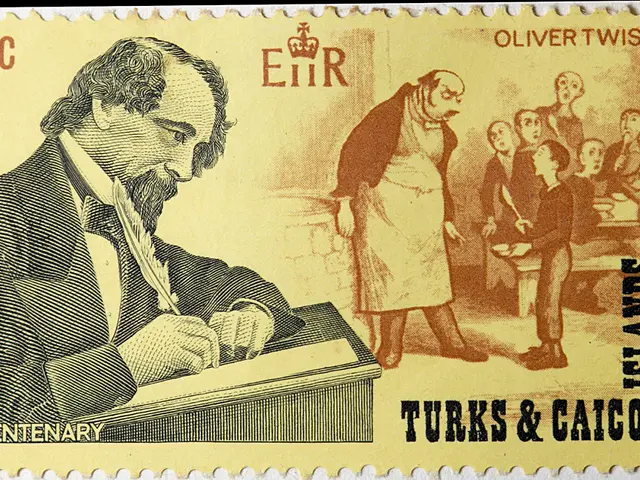Revolution of the Outstanding Self-Performers
In the modern business landscape, a new breed of companies is emerging, fundamentally redefining the way organizations operate. These are the AI-native organizations, built around artificial intelligence (AI) as the core architecture that drives their operations, products, and business models [1][3].
At the heart of these organizations, AI functions as the central nervous system, orchestrating data flows, automating and augmenting workflows, enabling continuous learning, and powering adaptive decision-making processes.
The nature and structure of AI-native organizations are characterized by several distinct features. AI is deeply integrated into every layer of the system, with applications relying on AI models to determine core operations rather than traditional rule-based logic [1]. The underlying technology stack supports diverse computational needs of AI, adjusting based on user interaction and environmental changes [1].
Moreover, AI-native systems constantly learn from interactions and data streams, enabling ongoing optimization and scaling of intelligence across organizational functions [1]. This continuous learning and evolution give rise to new business models and capabilities, unlocking entirely new product categories, services, and revenue streams [1][5].
The integration of AI as the central nervous system significantly impacts organizational leadership and decision-making. AI-native cultures promote agility and rapid experimentation, shifting leadership mindsets from perfection to continuous improvement [5]. AI models analyze large and diverse data sets continuously, providing insights or automation that leaders can rely on for faster, more accurate decisions [3].
AI enables coordination across multiple AI agents and diverse organizational units, supporting complex multitasking and strategic alignment [5]. Organizations can evolve from reactive decision-making to anticipatory models, where AI forecasts market trends, customer needs, and operational risks before they manifest, enabling proactive leadership strategies [5].
AI systems also scale the expertise and augment the cognitive capacity of leadership teams, acting as an augmentation of the central executive brain network. This improvement in complex problem-solving and strategic focus across facets of the organization is a game-changer for AI-native organizations [2][3].
The evolution of AI-native organizations represents a new evolutionary leap beyond traditional flattening of organizational structures. The three critical functions of great leaders in AI-native organizations are setting vision and values, designing human-AI interaction patterns, and continuously evolving organizational intelligence [4].
In essence, AI-native organizations integrate artificial intelligence deeply into their structures and workflows, making AI the foundational system that organizes, coordinates, and enhances leadership and decision-making. This transformation positions AI not just as a tool but as the critical infrastructure akin to a biological central nervous system within the corporate body [1][3][5].
[1] McAfee, A., Brynjolfsson, E., & Chui, M. (2017). The Second Machine Age: Work, Progress, and Prosperity in a Time of Brilliant Technologies. W. W. Norton & Company.
[2] Hansen, M. C., & Yannakakis, G. M. (2019). The Algorithmic Leader: How to be Smart when Machines are Smarter Than You. Basic Books.
[3] Manyika, J., Chui, M., Bughin, J., Dobbs, R., Roxburgh, C., & Byers, A. (2017). People + machines: rethinking how technologies will help us work. McKinsey Global Institute.
[4] Goldman, S. (2019). Leadership in the Age of Artificial Intelligence: How AI Will Transform Business and What Leaders Need to Know Now. Columbia University Press.
[5] Woerner, M. (2019). The Organizational Imperative of AI: How Artificial Intelligence Will Change the Way We Lead and Work. Harvard Business Review Press.
- AI functions as the central nervous system in AI-native organizations, overseeing data flows, automating workflows, and powering decision-making processes.
- The integration of AI enables continuous learning and optimization, leading to new business models and product categories for AI-native organizations.
- AI-native leadership cultures promote agility and continuous improvement, with leaders relying on AI models for faster, more accurate decisions.
- AI systems can coordinate multiple AI agents and align diverse organizational units, fostering complex multitasking and strategic alignment.
- AI-native organizations view AI as the critical infrastructure, transforming traditional workflows and making AI an essential part of their leadership and organizational structures.




